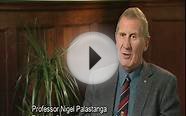Www.online Colleges
 Colleges and universities typically adopt online video to serve their principal mission: education. Yet, increasingly they are finding ways to put video to use for marketing. Though the goals can be different than the corporate sector’s, they still serve mission-critical needs.
Colleges and universities typically adopt online video to serve their principal mission: education. Yet, increasingly they are finding ways to put video to use for marketing. Though the goals can be different than the corporate sector’s, they still serve mission-critical needs.
We talked with production staff at three different types of schools—a community college, a liberal arts college, and a law school—that have each used online video marketing in unique ways.
Creating Profiles in Success
For Monroe Community College’s annual Gold Star Gala, the Instructional Technologies department works with the school’s Foundation and Alumni Affairs office to produce video profiles of alumni who have gone on to fruitful careers.
“They’re all successful, prominent members of the Rochester [New York] community, ” explained multimedia technician Bailey Burritt, who produced many of the profiles. “For instance, one ended up working for NASA, (and) we’ve had CEOs. It runs the gamut.”
Each two to three minute profile is built around an edited interview of an alum discussing his or her time at MCC and how that education got them where they are today. The videos are shown at the Gala and used online as a fundraising tool for scholarships.
The video profile is a tried-and-true approach in marketing across sectors. Burritt said MCC uses this method to communicate “what could happen to you by coming to MCC.” The hope is that donors will be moved by these personal narratives of achievement, helping them decide to invest in the next generation.
Although it is difficult to match views directly with donations, according to Burritt the Foundation “loves what we do for them.” They track viewership numbers, helping answer the question, “Is it worth our time and money?”
Burritt shared some recommendations for producing effective video profiles. In interviews:
- Be clear on the goal for the video. “What’s the message? Keep focused on that.”
- Get a story. “Have some talking points (you) want them to hit on, ” but don’t be too focused on your questions. “The stuff that makes the audience tear up is unplanned, top-of-the-head stuff.”
- Strive for authenticity. “You want to have control of the message, but you don’t want to force it, ” Burritt said. “People can tell if it’s pandering.”
You might also like








